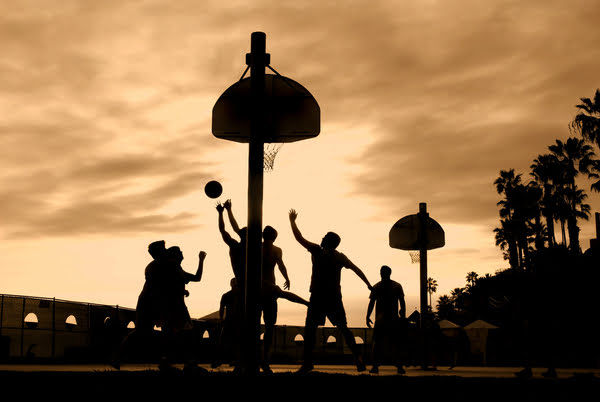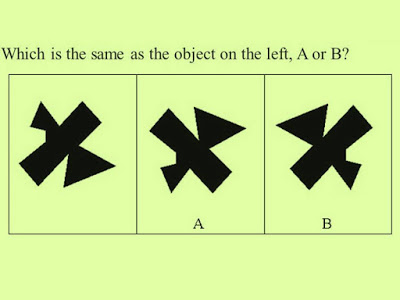For the most part of my life, especially my childhood and teen years, I’ve been an ardent sports fan. I loved watching and playing sports. I enjoyed watching and playing all kinds of sports, especially cricket and football.
I not only played with my relatives and schoolmates but also practiced alone for hours, never getting enough of it. Cricket, football, basketball, and tennis stars that I saw on TV were my heroes, and I fantasized about being one of them.

I noticed that a lot of my guy friends shared similar passions. Soon, I realized most men all over the world shared similar interests.
Men, sports, and spatial ability
It’s obvious to many that men universally show a greater interest in watching and playing sports than women. There are myriad world cups, championships, and other competitions held around the world in which men compete to outshine other men.
Of course, there are women’s competitions and women’s world cups, too, but meager audiences at most of these events betray a general lack of human interest in such competitions.
Male sport, on the contrary, is huge. Many male athletes are among the top-paid celebrities. Thousands of roaring fans in cricket and football stadiums suggest that there’s a strong motivation at play.
Part of the reason why men are more into sports is that they generally have a better spatial ability than women. Spatial ability means the ability to manipulate objects in one’s mind. It means being able to picture in one’s mind the shape of things, their dimensions, coordinates, proportions, movement, and geography.
Men consistently perform better than women on tests of spatial ability. For instance, they can easily draw 3-D diagrams of houses from 2-D plans. Also, men identify more places on a map than women do and have consistently proven to be better at tasks testing mental rotation skills.1
Men are also generally better at targeting, i.e., hitting a point with an object accurately. They’re also better at hand-eye coordination, estimating angles, and navigation abilities.2

In Palaeolithic times, these skills made men good hunters. Superior spatial ability allowed our male ancestors to calculate speed, movement, and distance of prey, figure out how fast they had to run to catch their prey and hit their prey from a distance with a stone or a spear.
Modern men in industrialized societies no longer hunt, but their minds have evolved to hunt, and sports provide a platform where they can exercise their cognitive abilities. Sports that involve chasing, hitting, and throwing are, therefore, activities that exploit men’s evolved cognitive systems for hunting.
Not only sports but disciplines such as STEM (Science, Technology, Engineering, and Maths) and hobbies such as playing computer games also require good spatial abilities, which explains why men dominate these fields and activities.
Sports and mental practice
Hunting was a crucial but dangerous activity for our male ancestors, and they couldn’t afford a low enough hunting success rate that could hamper their chances of survival. Therefore, they needed to become good at it by practice and get it right in the least number of attempts possible.
This is where human adaptation, called mental practice, comes in. The good thing about the human mind is that it not only learns an activity through actual practice but also by mental practice, i.e., watching others perform the activity.
Those who’re motivated to observe skilled performances are better able to take advantage of the phenomenon of mental practice. This motivation has to be biased toward observing the best-skilled performers available as watching someone perform a skill poorly would provide less benefit and might even degrade one’s own skills if the performance were really terrible.3
In Paleolithic times, this motivation would involve nothing more than identifying the best hunter in your band and observing his activities closely.
In modern times, this motivation is what makes men watch sports eagerly and become diehard fans of their favorite sportspersons (modern equivalents of ancient best-skilled hunters).
Male sports competitions can also be viewed as ‘dominance competitions’ that are designed to establish the most dominant male and positions of other males in the ‘dominance hierarchy’.
Thousands of people painstakingly maintain the statistics of players, and media persons highlight a star athlete’s milestones.
This is probably you come across headlines such as, “England thrash Brazil in the semi-final” or “Real Madrid destroys Barcelona” or a cricket headline such as “India vs. Pakistan: War of the Titans”.
These headlines have connotations of violence (thrash, destroy, war) because, in Paleolithic times, dominance was established more or less by violence.
Sexual selection and spatial ability
If men, on average, are better at spatial ability, it makes sense to assume they must have attained greater reproductive benefits over evolutionary time by having such an ability.
Of course, being the best hunter would’ve raised a male ancestor’s social status and made him more attractive to the opposite sex.
But there’s also evidence suggesting that spatial learning skills evolve in proportion to navigational demands, and it is predicted that sex differences in spatial ability will evolve only in species where expanding navigational range contributes differentially to the reproductive success of males and females.
In simple words, a male or a female of a species will only evolve better spatial learning skills if they can achieve more mating opportunities by expanding their territory.
Researchers testing this prediction found that males of a polygynous species of rodents expanded their range only on attaining reproductive status and only during the breeding season.
On the contrary, males and females of another congeneric rodent species that was monogamous didn’t show any sex difference in ranging, irrespective of reproductive status. Subsequent testing showed that only the polygynous species of these rodents showed consistent male superiority on spatial tasks.4
A 2014 study of two African tribes found evidence that men evolved better navigation abilities than women because men with better spatial skills could roam farther and have children with more mates.5
According to the researchers who did this study, navigation ability facilitates traveling longer distances and exploring new environments. And the farther you travel, the more likely you are to encounter new mating opportunities.
Testosterone and spatial ability
Better spatial ability is linked to androgens (primarily testosterone) that the fetus is exposed to in the early stages of development in the womb.
For instance, studies have shown that spatial ability in androgen-deficient men is impaired.6 Also, there’s evidence that women exposed to higher levels of testosterone in the womb and during childhood perform better at spatial ability tests.7
We’re not stuck with who we are
Like almost any other skill, spatial ability can be improved with practice. Sure, men may have a head start, but this doesn’t mean women can’t learn spatial ability. Spatial ability may be improved through various forms of training, including video games.8
I still enjoy playing sports as much as I did during my childhood and teen years. However, I no longer enjoy watching it. I’d go as far as to say that I actually dislike watching it.
This is because, over time, I found more interesting things to engage myself with. This goes to show that our evolutionary tendencies are not fixed in stone but can be easily overridden by life experiences. The human mind is very flexible.
References
- Dabbs, J. M., Chang, E. L., Strong, R. A., & Milun, R. (1998). Spatial ability, navigation strategy, and geographic knowledge among men and women. Evolution and Human Behavior, 19(2), 89-98.
- Pease, A., & Pease, B. (2016). Why Men Don’t Listen & Women Can’t Read Maps: How to spot the differences in the way men & women think. Hachette UK.
- Bridgeman, B. (2003). Psychology and evolution: The origins of mind. Sage.
- Gaulin, S. J., & Fitzgerald, R. W. (1989). Sexual selection for spatial-learning ability. Animal behaviour, 37, 322-331.
- University of Utah. (2014, November 13). Did men evolve navigation skill to find mates? Spatial ability, roaming distance linked to number of lovers. ScienceDaily. Retrieved August 19, 2017 from www.sciencedaily.com/releases/2014/11/141113074833.htm
- Hier, D. B., & Crowley Jr, W. F. (1982). Spatial ability in androgen-deficient men. New England Journal of Medicine, 306(20), 1202-1205.
- Mueller, S. C., Temple, V., Oh, E., VanRyzin, C., Williams, A., Cornwell, B., … & Merke, D. P. (2008). Early androgen exposure modulates spatial cognition in congenital adrenal hyperplasia (CAH). Psychoneuroendocrinology, 33(7), 973-980.
- Temple University. (2012, July 25). Spatial skills may be improved through training, including video games. ScienceDaily. Retrieved August 19, 2017 from www.sciencedaily.com/releases/2012/07/120725120634.htm
